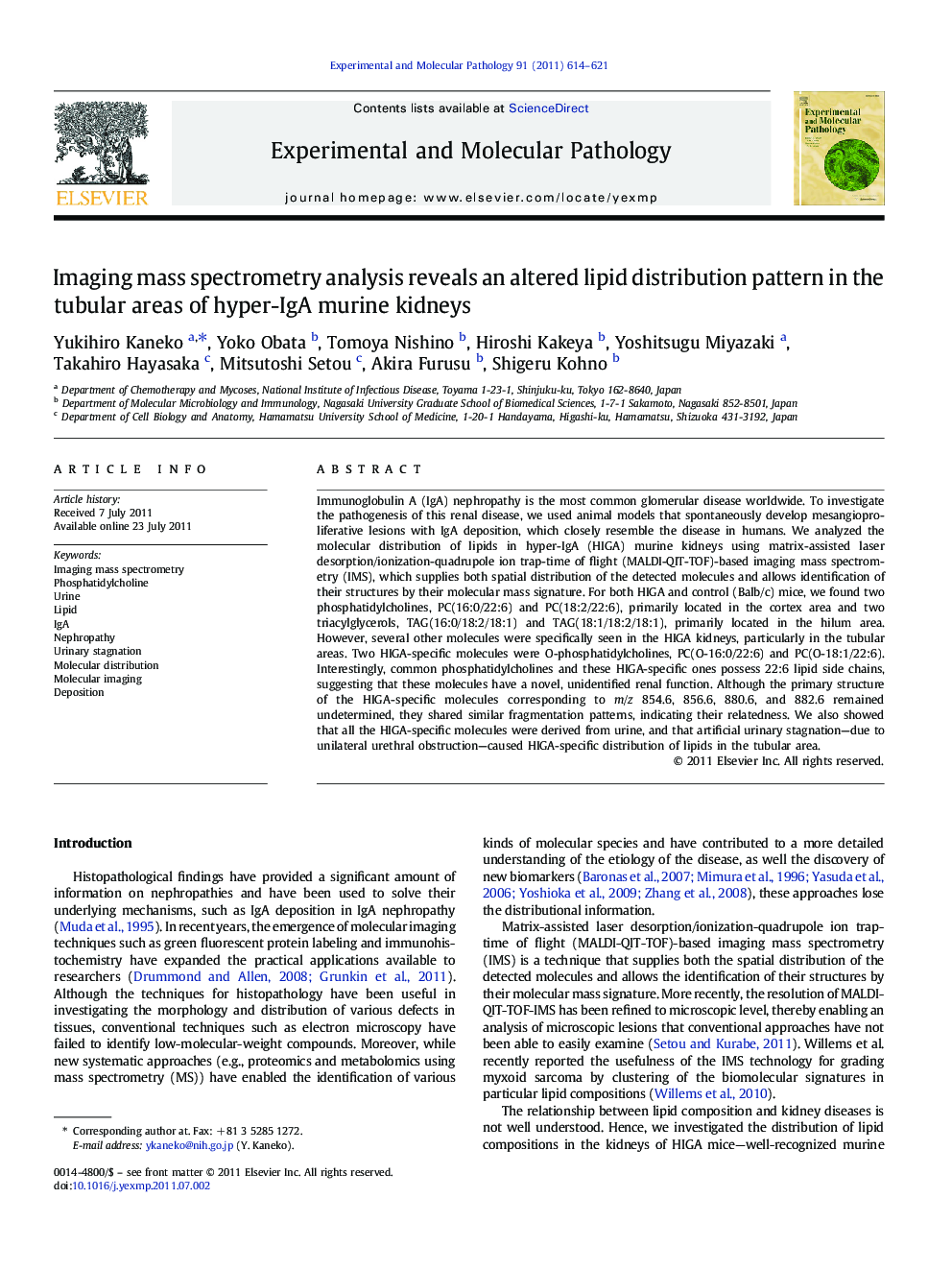| کد مقاله | کد نشریه | سال انتشار | مقاله انگلیسی | نسخه تمام متن |
|---|---|---|---|---|
| 2775261 | 1152318 | 2011 | 8 صفحه PDF | دانلود رایگان |

Immunoglobulin A (IgA) nephropathy is the most common glomerular disease worldwide. To investigate the pathogenesis of this renal disease, we used animal models that spontaneously develop mesangioproliferative lesions with IgA deposition, which closely resemble the disease in humans. We analyzed the molecular distribution of lipids in hyper-IgA (HIGA) murine kidneys using matrix-assisted laser desorption/ionization-quadrupole ion trap-time of flight (MALDI-QIT-TOF)-based imaging mass spectrometry (IMS), which supplies both spatial distribution of the detected molecules and allows identification of their structures by their molecular mass signature. For both HIGA and control (Balb/c) mice, we found two phosphatidylcholines, PC(16:0/22:6) and PC(18:2/22:6), primarily located in the cortex area and two triacylglycerols, TAG(16:0/18:2/18:1) and TAG(18:1/18:2/18:1), primarily located in the hilum area. However, several other molecules were specifically seen in the HIGA kidneys, particularly in the tubular areas. Two HIGA-specific molecules were O-phosphatidylcholines, PC(O-16:0/22:6) and PC(O-18:1/22:6). Interestingly, common phosphatidylcholines and these HIGA-specific ones possess 22:6 lipid side chains, suggesting that these molecules have a novel, unidentified renal function. Although the primary structure of the HIGA-specific molecules corresponding to m/z 854.6, 856.6, 880.6, and 882.6 remained undetermined, they shared similar fragmentation patterns, indicating their relatedness. We also showed that all the HIGA-specific molecules were derived from urine, and that artificial urinary stagnation—due to unilateral urethral obstruction—caused HIGA-specific distribution of lipids in the tubular area.
► Imaging mass spectrometry revealed the molecular distribution in mouse kidneys.
► Regular phosphatidylcholines (PCs) were generally distributed in the cortex area.
► O-PCs were specifically distributed in the tubular areas of hyper-IgA mouse kidneys.
► O-PCs were derived from urine.
► Urinary stagnation caused hyper IgA-specific distribution of lipids.
Journal: Experimental and Molecular Pathology - Volume 91, Issue 2, October 2011, Pages 614–621